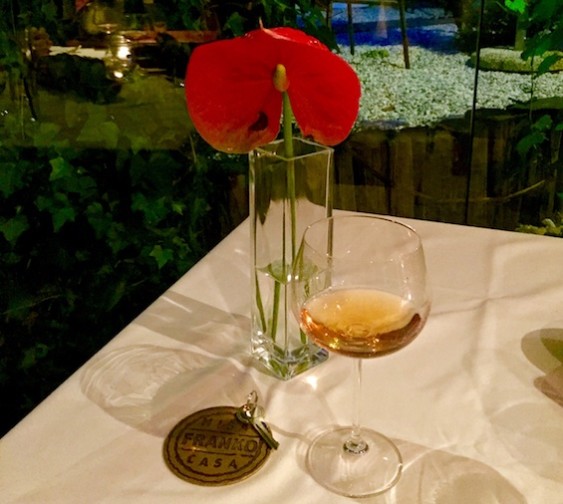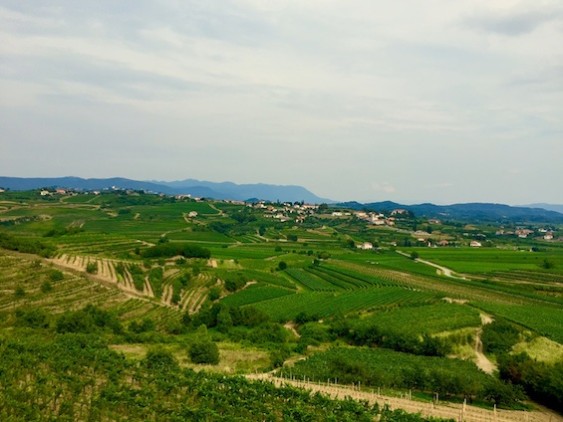When it comes to restaurant wine lists, sometimes it can feel like the more esoteric the choices, the more knowledgeable the sommelier thinks he or she seems. That’s why you might have begun noticing “orange wine” sections on some of the fancier (or at least, longer) lists you’ve seen in restaurants lately.

Is it white? Is it red? No, it’s orange wine!
So what is “orange wine”? No, it’s not wine made from oranges. Generally speaking, it’s also not wine produced in the wine region of Orange in New South Wales, Australia…though it could be. Rather, what is called orange wine on a wine list is usually a type of white wine that has a slightly orange tint to it.
How does orange wine become orange? It’s sort of like the process of making rosé wine. Rather than simply pressing the white wine grapes for their juice and fermenting that alone, like most white wine is made, some producers leave the grape juice on the skins for a while, where it picks up that extra tinge. Many are even aged that way in clay amphorae, or jars, like people have been doing since Roman times.
Orange wines happen to be on my mind this week because I’m actually traveling in one of the places where they are quite well known (and delicious), Slovenia. And though the taste can be a bit strange to most contemporary wine drinkers, many are well worth a try.

Slovenia is famous for its wines in general, but especially for its orange wines from regions like Goriska Brda.
Like white wines, orange wines tend to have a freshness and acidity to them as well as notes of citrus or summer fruits. But that extra skin maceration time gives them more complex and robust textures as well as earthy or even mushroomy notes like some red wines tend to have. It can be a bit jarring when you try them for the first time (or several times), but certainly an interesting experience, and some wonderful pairings with heavier seafood, fish and pasta dishes.
Among the producers you might see in the U.S. are Movia (try the 2008 Veliko, which is a blend of Rebula – a grape Slovenia is known for, though you might also have heard it called Ribolla Gialla in Italy – Sauvignon Blanc and Pinot Gris), Edi Simcic (several of their Sauvignon Blancs are produced this way), and Slavcek Rebula…though you might need to go to Slovenia and have dinner at Hisa Franko to try that one!
That’s just a brief introduction, but I’ll be writing future posts about all the other fantastic things I got to eat and drink in Slovenia, as well as some of the other wine regions around the world that I love, so stay tuned for more travel content.
Have you tried orange wine lately? Tweet me about it @clustercrush.

